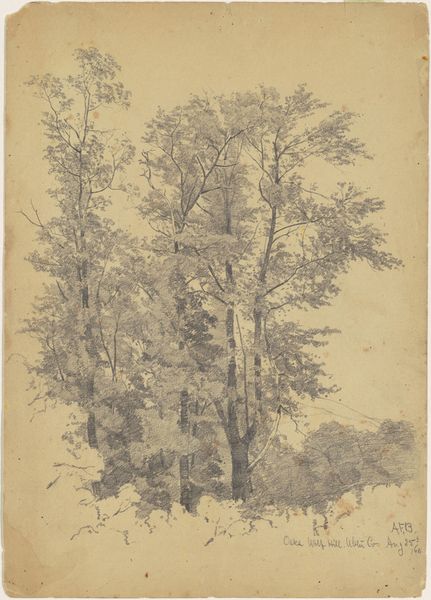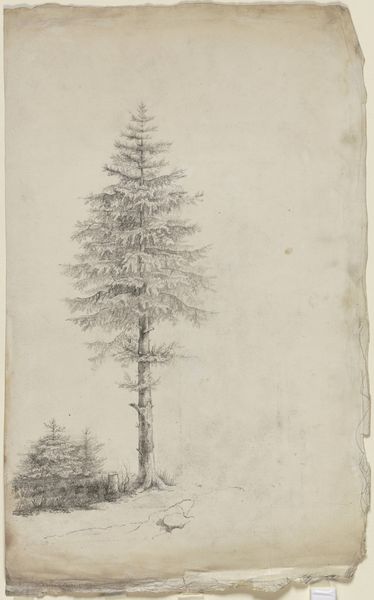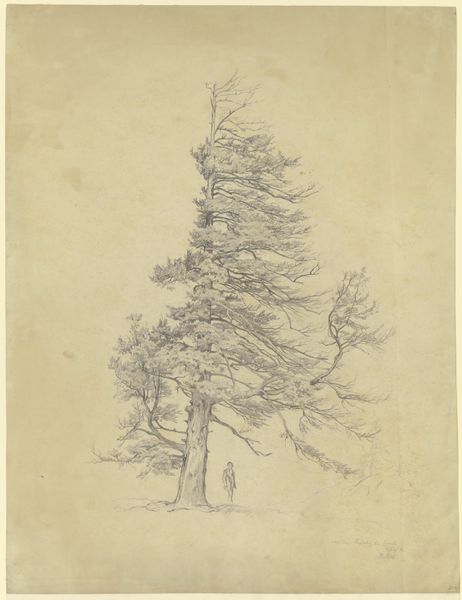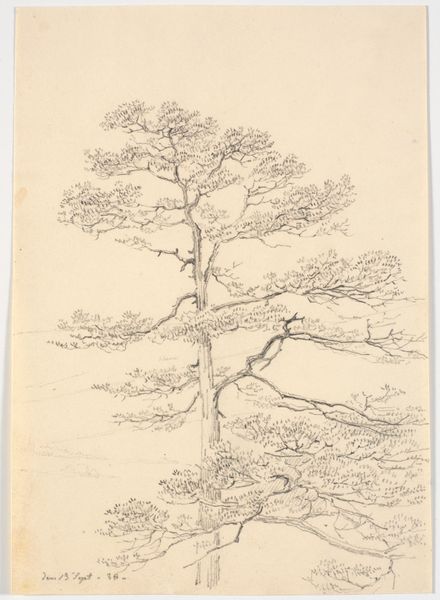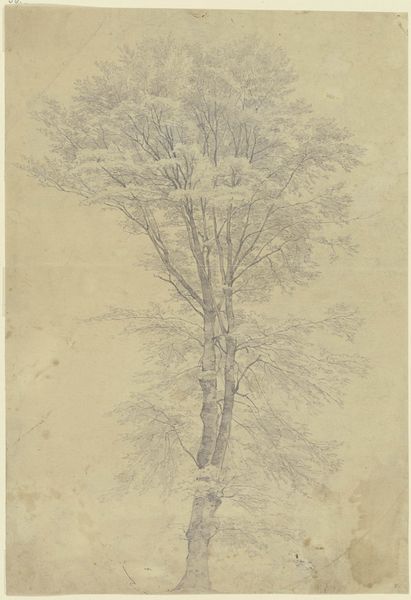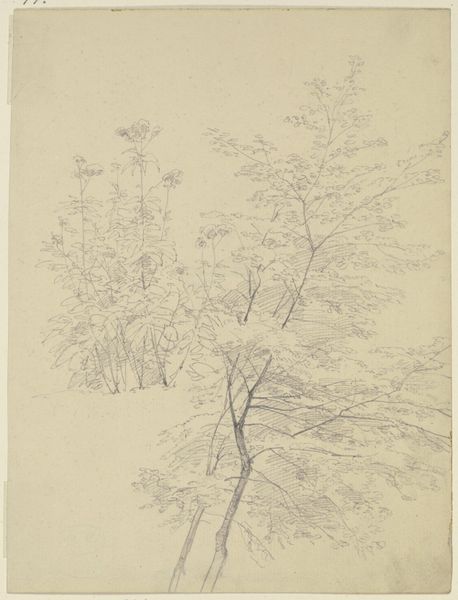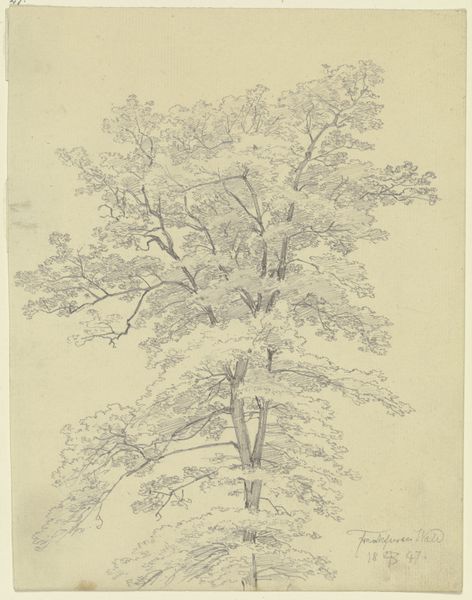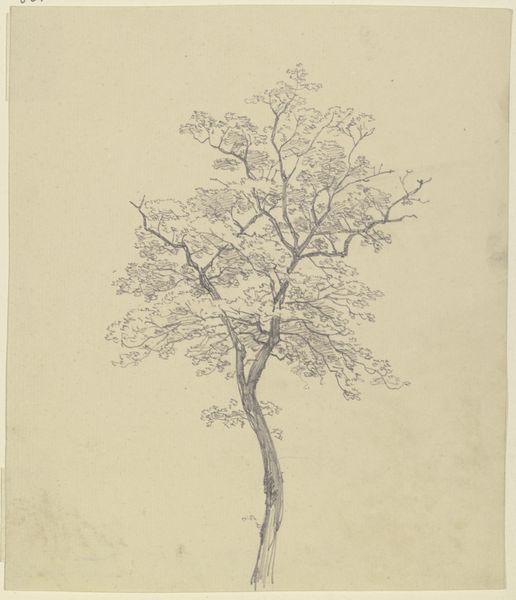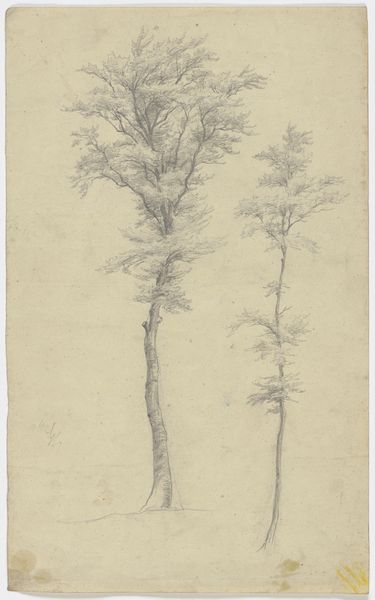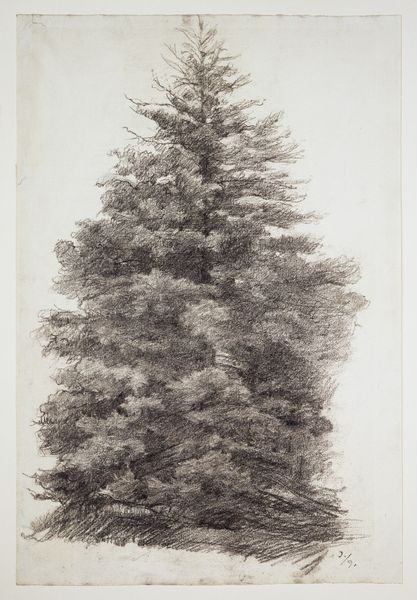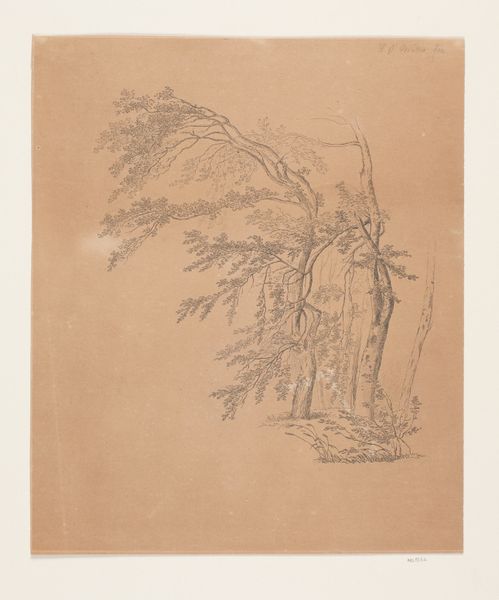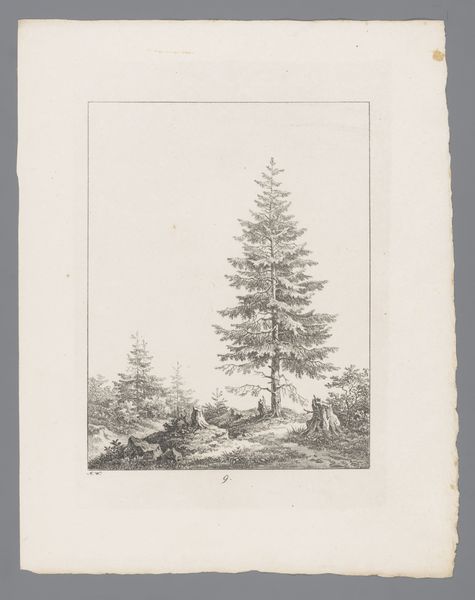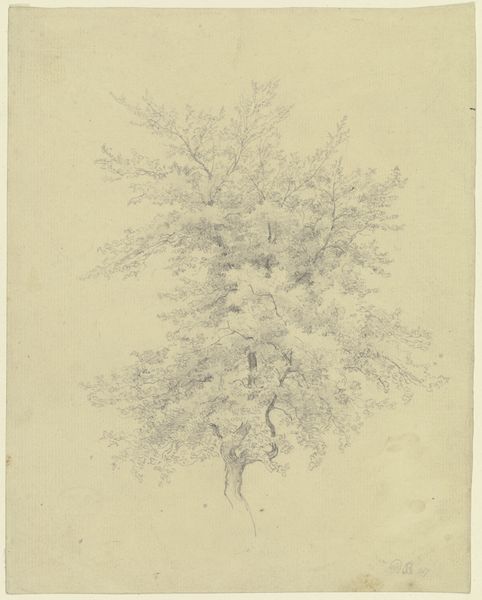
drawing, pencil
#
drawing
#
pencil sketch
#
landscape
#
figuration
#
pencil
#
hudson-river-school
#
realism
Dimensions: sheet: 33.18 × 24.92 cm (13 1/16 × 9 13/16 in.)
Copyright: National Gallery of Art: CC0 1.0
Editor: So, here we have Andrew Fisher Bunner's "Trees, West Virginia" from 1867. It’s a delicate pencil drawing, and I'm immediately drawn to how realistically he’s rendered the texture of the tree bark and the needles. What catches your eye when you look at this piece? Curator: I'm interested in Bunner’s choice of materials here. The accessibility of pencil, readily available and relatively inexpensive even in the mid-19th century, suggests a particular kind of artistic practice. Was this preparatory, a sketch done en plein air before a larger painting, or was it conceived as a finished work itself? Consider the labor involved: the artist deliberately choosing a common material to depict a natural scene, challenging established notions of value and artistic creation. Editor: That's a good point. I hadn't really considered the "humbleness" of the medium. Could that have something to do with the Hudson River School's general aesthetic, celebrating the everyday American landscape rather than grand European scenes? Curator: Precisely. And we must acknowledge the social context: West Virginia, at this time, was newly formed after the Civil War. Bunner’s choice to depict a landscape—resourceful and plentiful with trees – can be interpreted as a social statement: The artist turns to an unassuming means, the pencil, to capture the possibilities in post-war America, hinting at extraction, labor, and industrial progress. How does the materiality of this pencil drawing relate to the historical moment? Editor: That really opens up a whole new way of looking at it for me. Thinking about it not just as a pretty landscape, but as a comment on the social and economic situation of the time... it gives the drawing more depth. Curator: Absolutely. Examining the production and context expands our appreciation. It prompts us to think critically about how art both reflects and influences the world around us. Editor: I’ll definitely keep the social context of the materials in mind when looking at art in the future. Curator: As will I. Thanks for offering me your view.
Comments
No comments
Be the first to comment and join the conversation on the ultimate creative platform.
